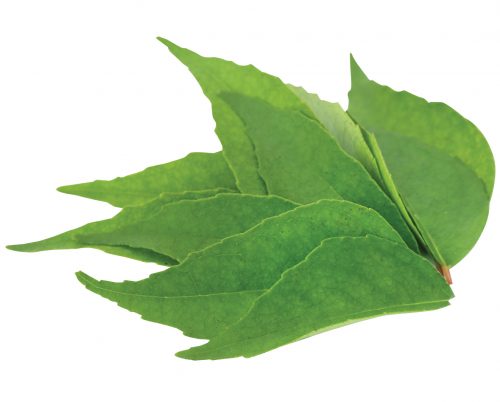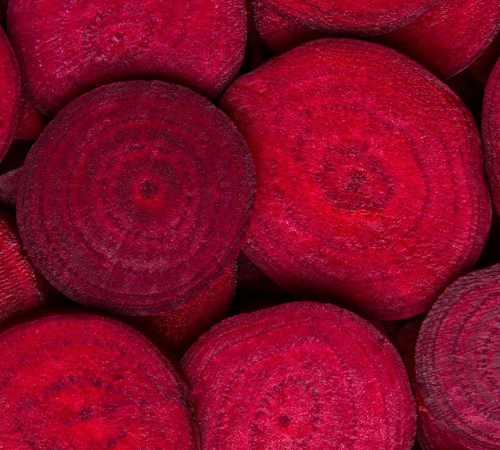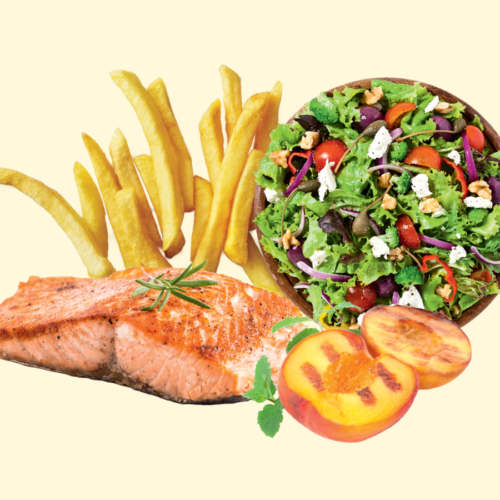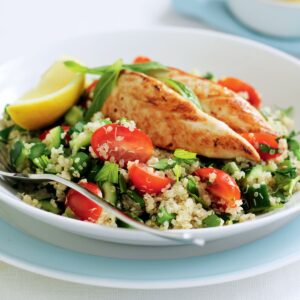
Curry leaf
The curry leaf is popular in Indian-inspired cuisine, bringing a fragrant, citrus-like flavour to dishes. Use curry leaf in sauces, stews, curries and soups, like you would a bay leaf.
The curry leaf shrub can be grown in a pot (it’s a great indoor plant) and prefers full sun. Pick leaves regularly as this stimulates growth, and leaves have more flavour when they are fresh too. Don’t confuse the curry leaf plant, named Murraya koenigii, with the regular curry plant – they aren’t the same.
Recipe idea
Watermelon
Made up of around 94 per cent water, this melon is aptly named. Watermelon is low-kJ, lightly sweetened and refreshing. Don’t spit the pips out, think of them as added fibre.
Watermelon contains a range of antioxidant compounds, especially carotenoids such as lycopene and beta-carotene. The more lycopene a watermelon has, the darker red the flesh. Higher intakes of lycopene (also found in tomatoes) have been associated with reduced risk for several cancers, especially prostate cancer. Beta-carotene (often associated with carrots) can be converted to vitamin A, an important nutrient for eye health, immunity and reproduction.
Watermelons grow best during a long, dry summer – with plenty of sun and space to grow. Harvest when the fruit sounds hollow when tapped. Enjoy it in gazpacho, turn the fruit into a drink, or add it to salads.
Recipe ideas
Lamb with tomato, watermelon and feta salad
Fruit pizza
Taro
Taro is a starchy root crop, grown in the Pacific Islands and a staple vegetable in the diets of those who live there. Taro has a slightly sweet, nutty flavour and is very versatile. It is not grown commercially in New Zealand – our supplies come from imports and backyard crops. Taro is a carbohydrate food, with 80 per cent more carbs by weight than potato (and around 75 per cent more kJ), so think of a serve as smaller than potato, say 80g. This serve will provide 2.5g fibre and has useful amounts of folate, vitamin E, potassium and B vitamins. Taro is also low-medium GI so, overall, it’s a great part of a sustaining meal.
There are a few things to watch for when preparing and cooking taro. It’s best to prepare raw taro using gloves, to avoid potentially itchy skin caused by a substance in raw taro called calcium oxalate. For this reason, taro, including the leaves, needs to be washed well and cooked thoroughly to prevent a reaction in the mouth and throat. Taro can be boiled, steamed or baked in the oven.
Did you know? There are at least 70 different varieties of taro documented.
Recipe ideas
Taro toss with miso honey chilli sauce and lime-glazed chicken
Summer vege curry
Fresh this month
(Harvested in New Zealand gardens in January)
Vegetables: Beetroot, broccoli, buttercup squash, butternut, green cabbage, capsicum, carrots, cauliflower, celery, courgettes, cucumber, eggplant, fennel, garlic, onions, peas, potatoes, pumpkin, shallots, silver beet, snow peas, spinach, spring onion, sweetcorn, tomato
Herbs: Basil, chives, coriander, dill, marjoram, mint, oregano, parsley, rosemary, sage, thyme
Fruit: Apricots, blackberries, blackcurrants, blueberries, boysenberries, cherries, nashi pears, nectarines, peaches, plums, raspberries, redcurrants
Article sources and references
- Choudhary BR et al. 2015. Phytochemicals and antioxidants in watermelon (Citrullus lanatus) genotypes under hot arid region. Indian Journal of Agricultural Sciences 85:414-7https://www.researchgate.net/publication/273775380_Phytochemicals_and_antioxidants_in_watermelon_Citrullus_lanatus_genotypes_under_hot_arid_region
- Nasir MU et al. 2015. Tomato processing, lycopene and health benefits: A review. Science Letters 3:1-5http://thesciencepublishers.com/science_letters/files/v3i1-1-2014038-SL.pdf
www.healthyfood.com










